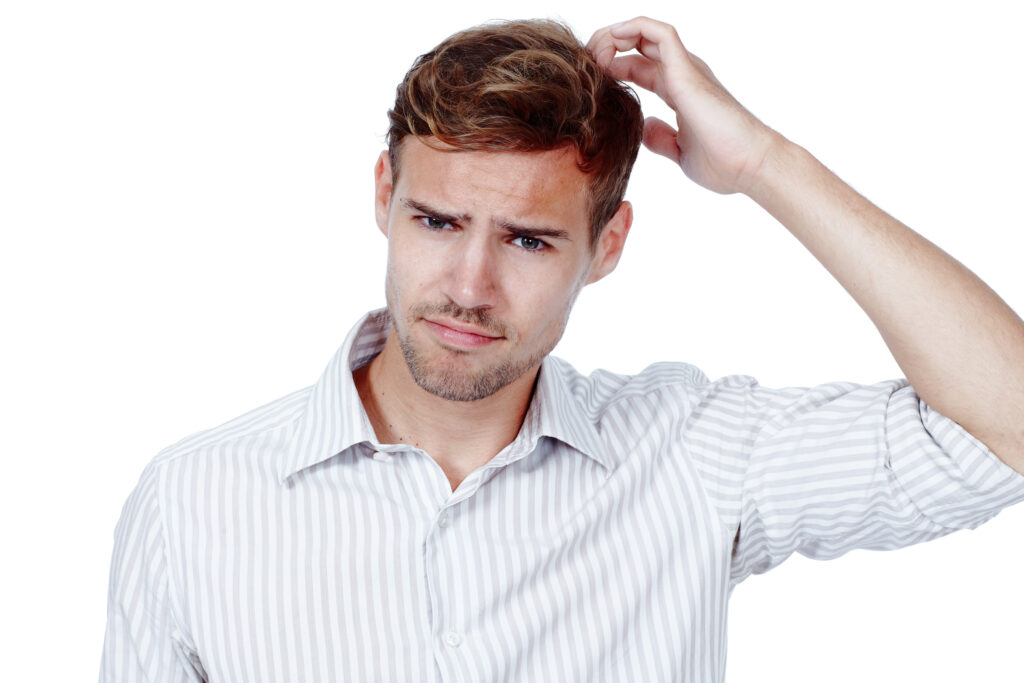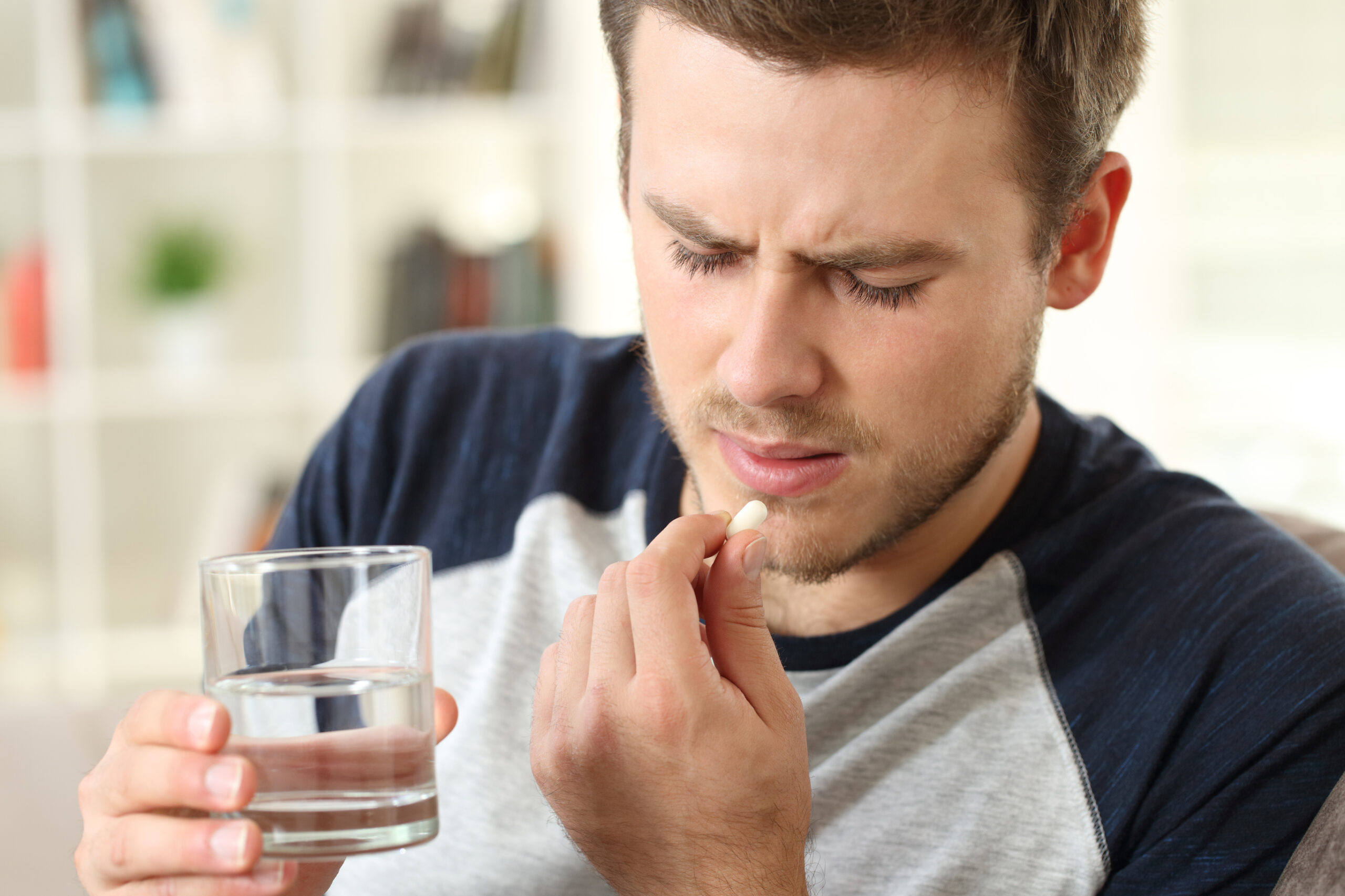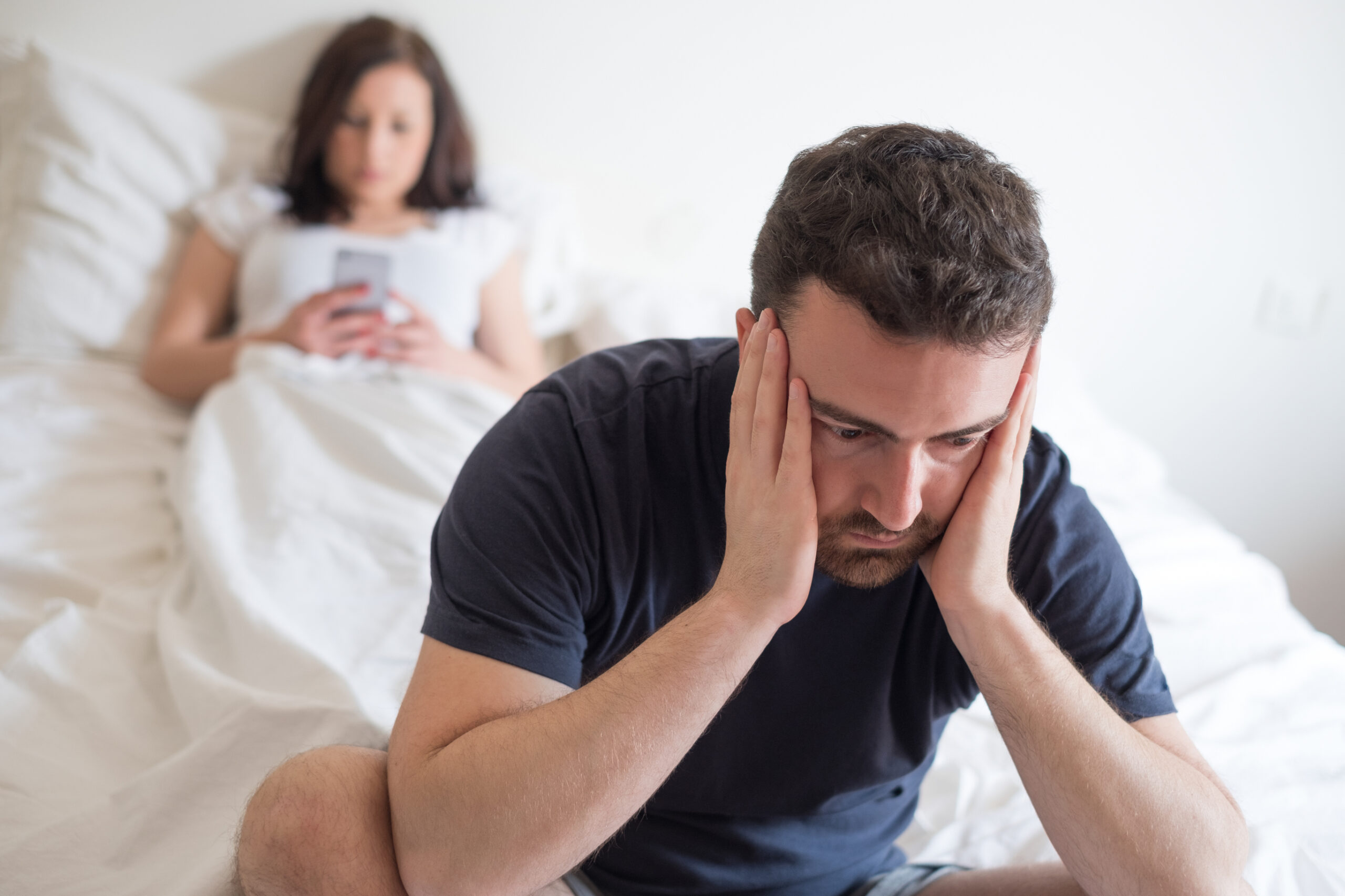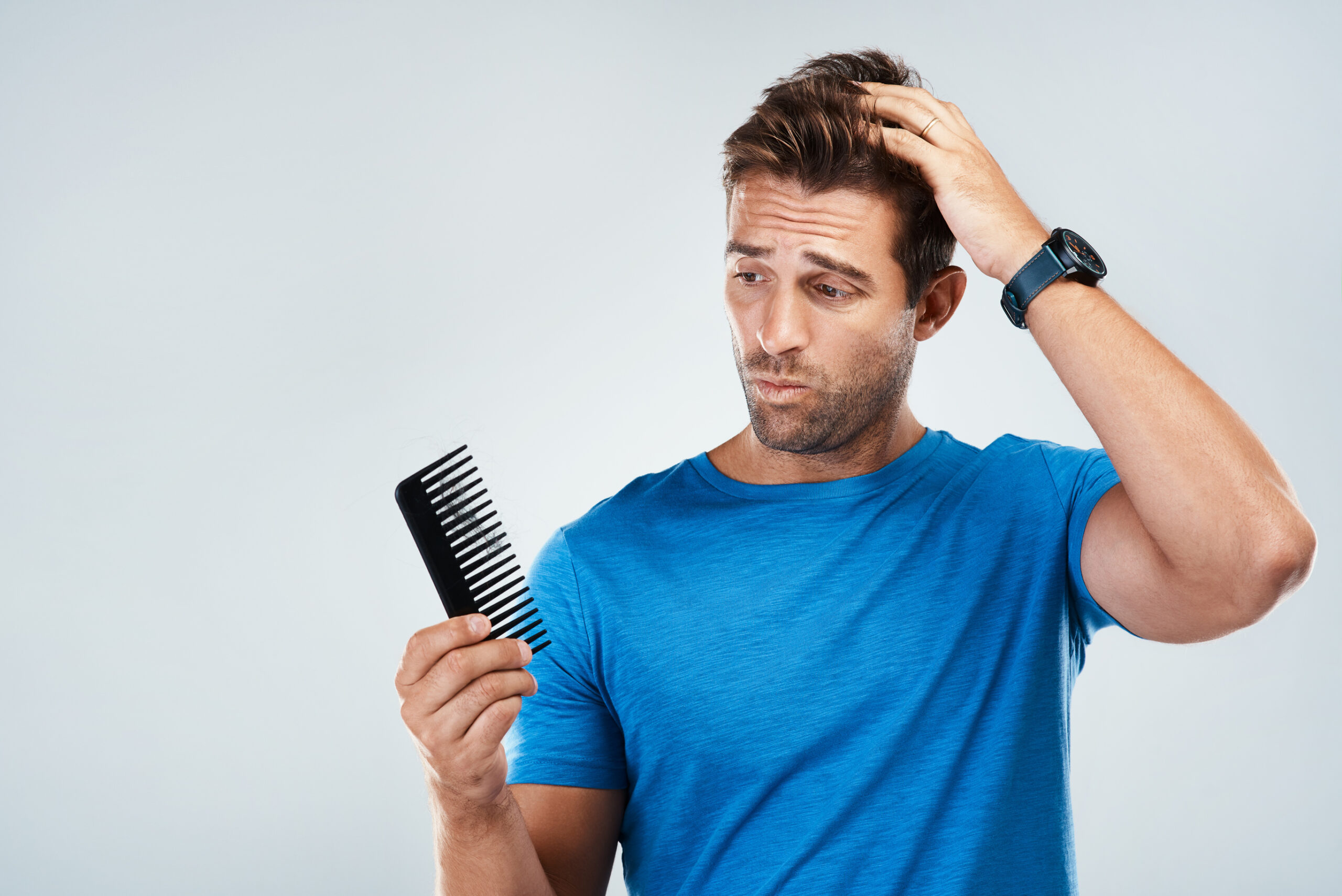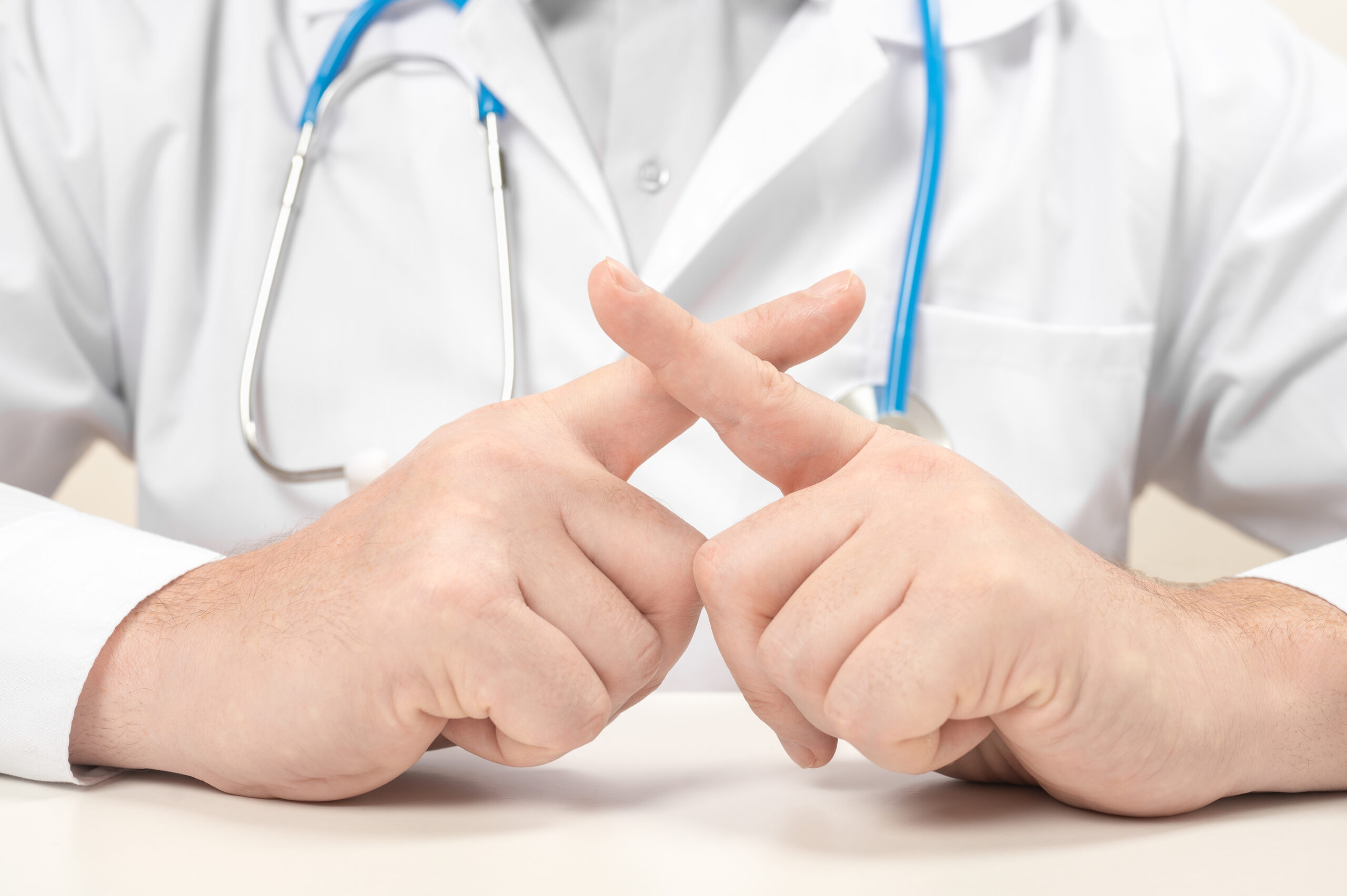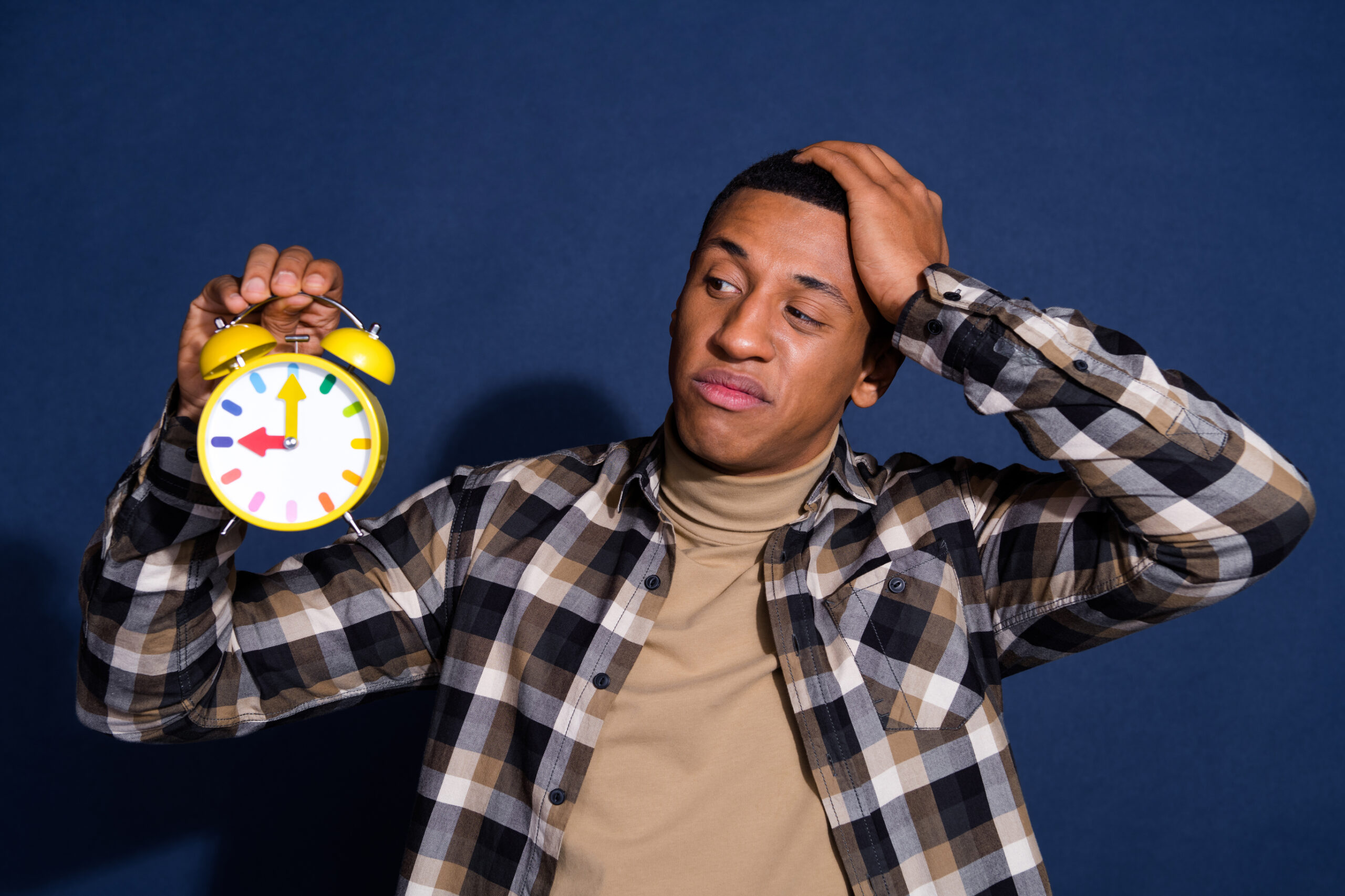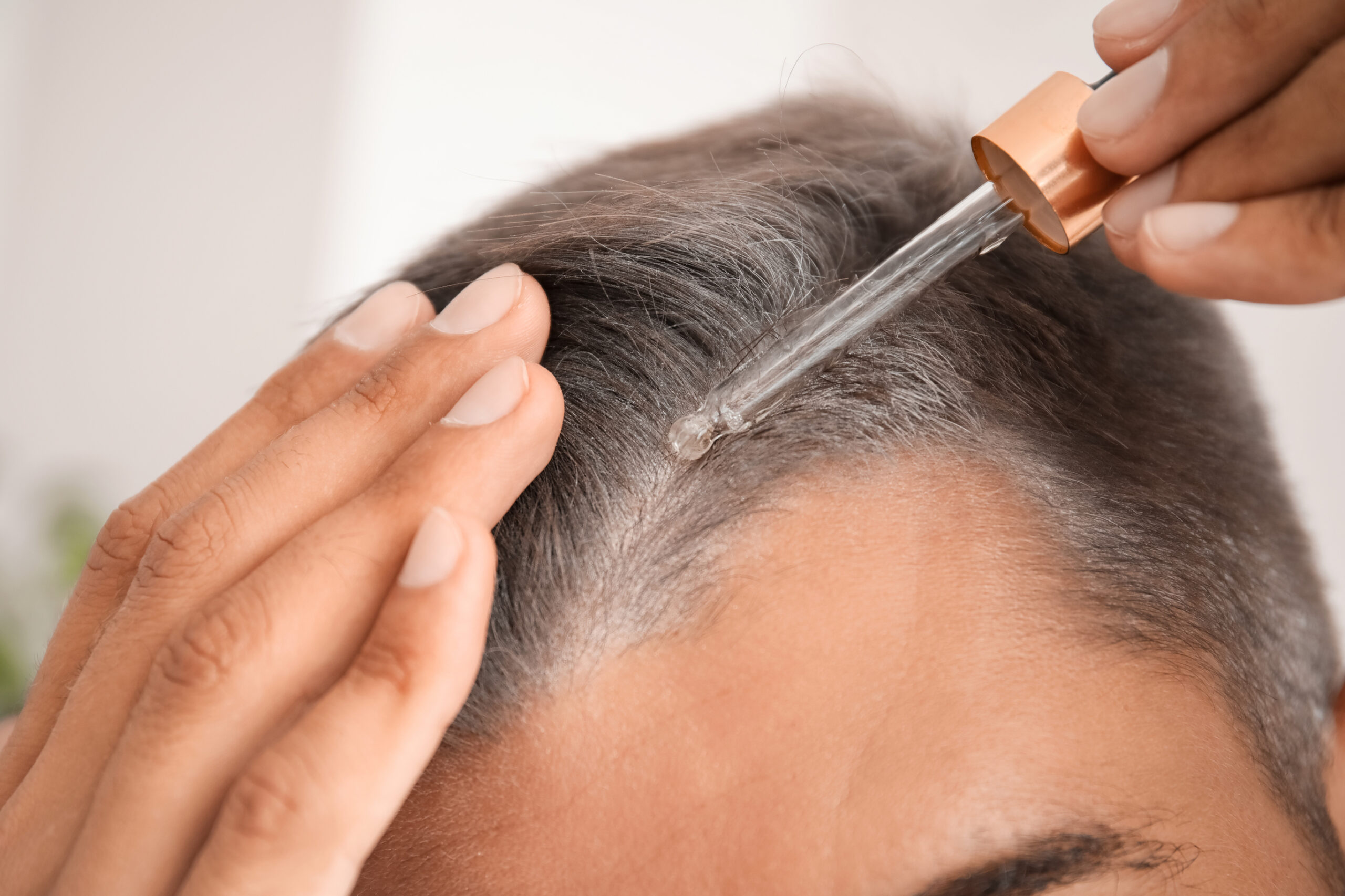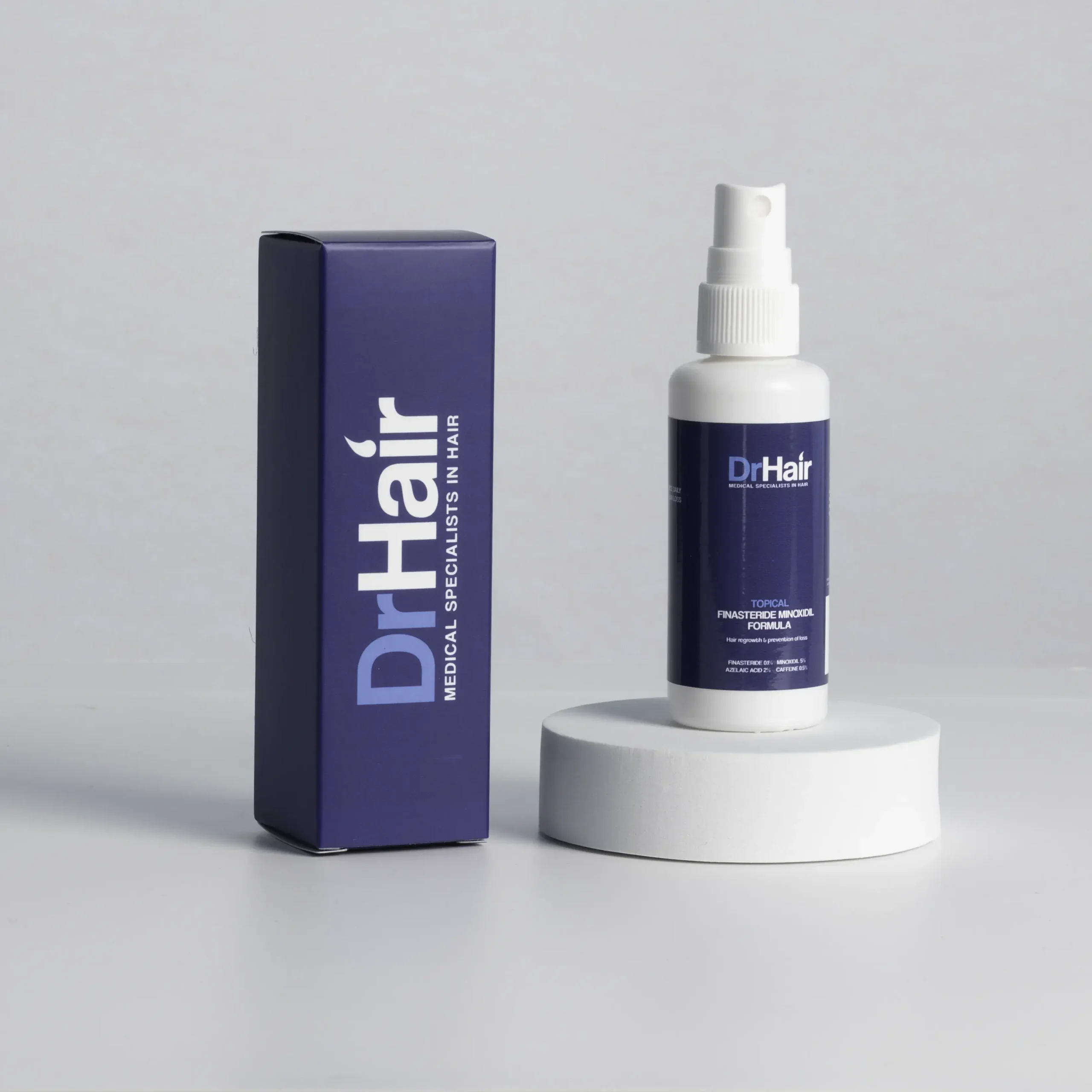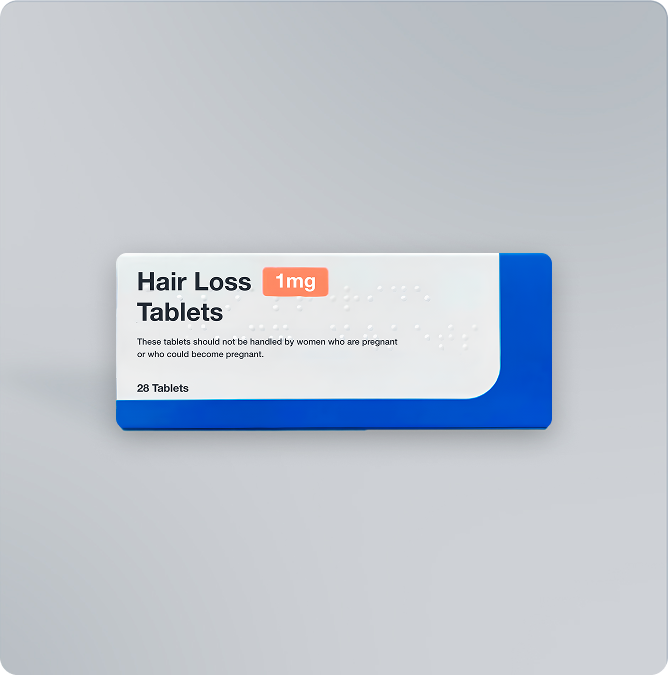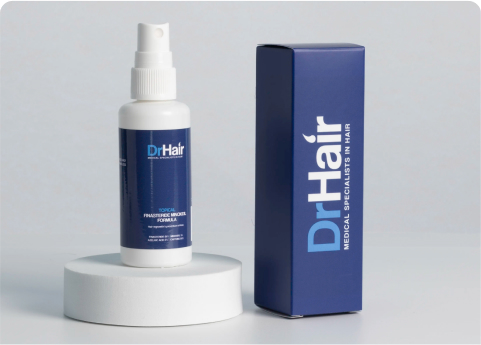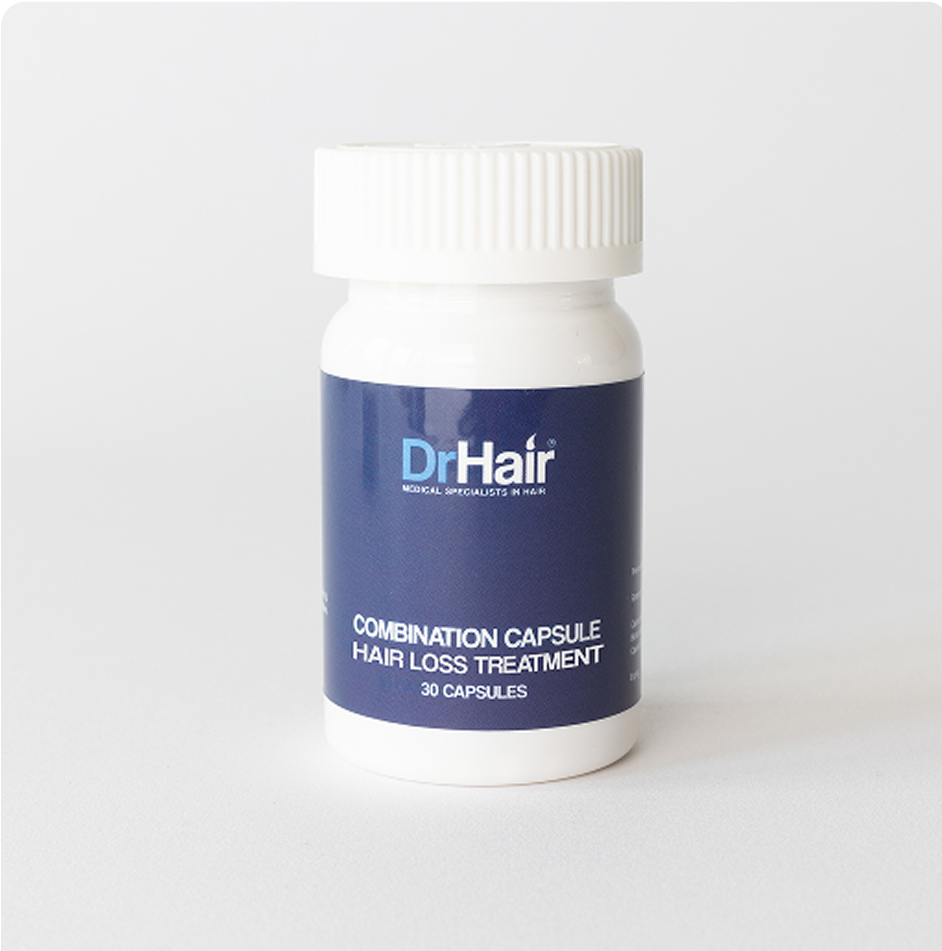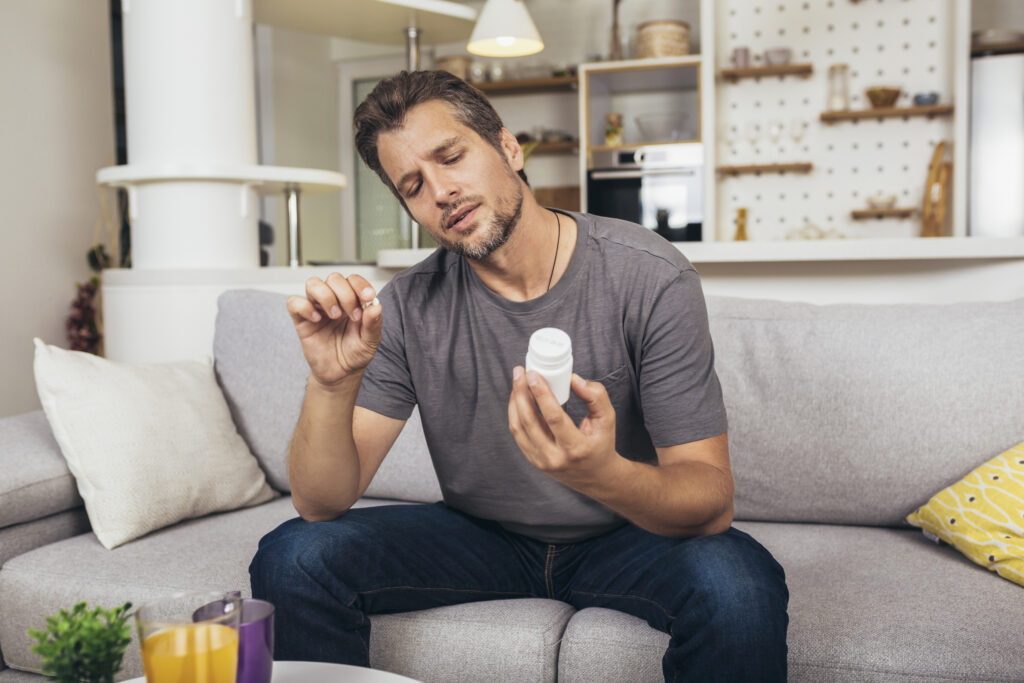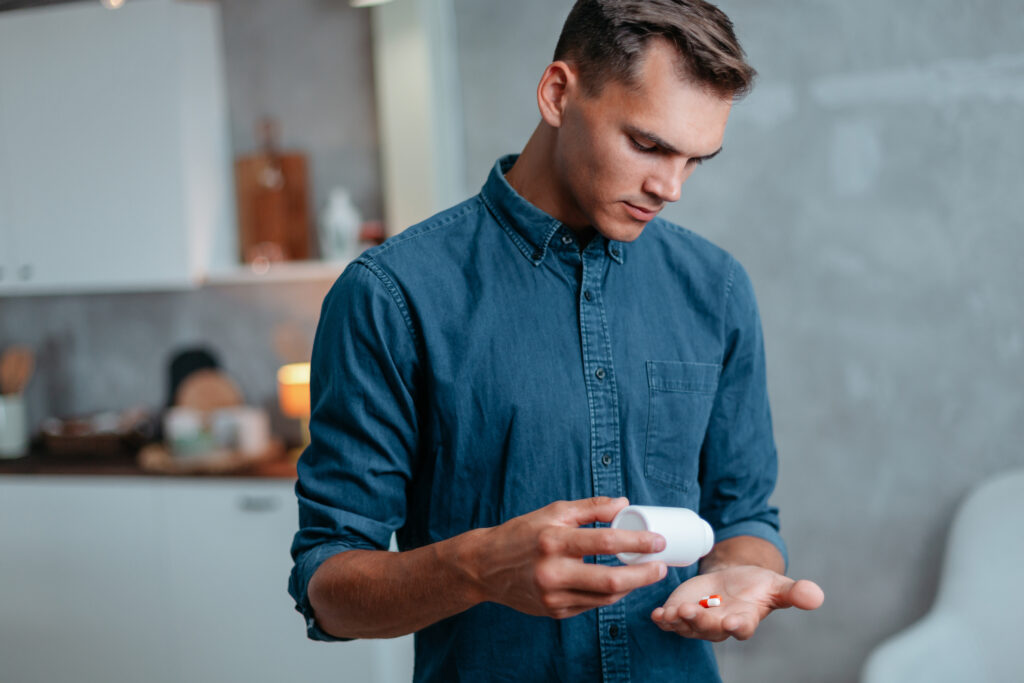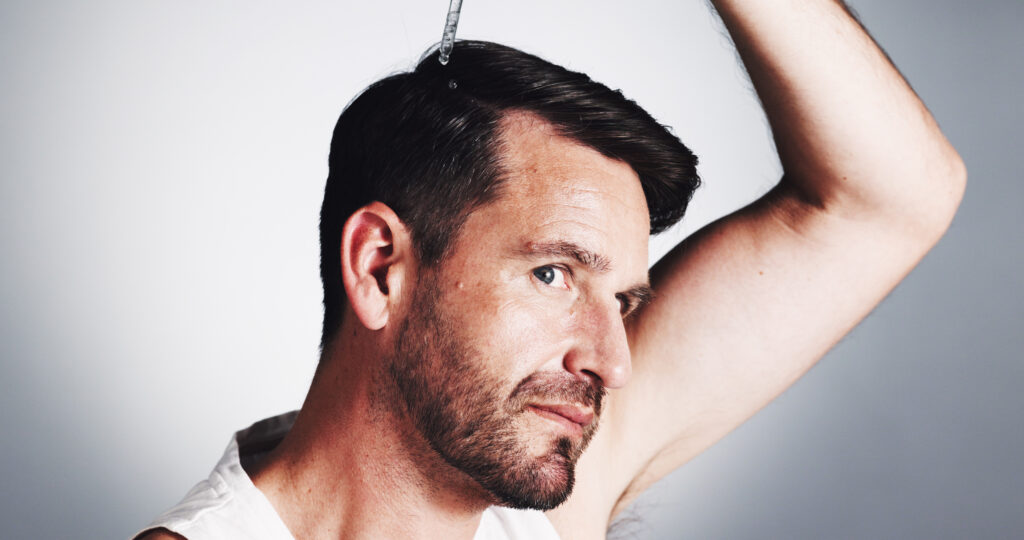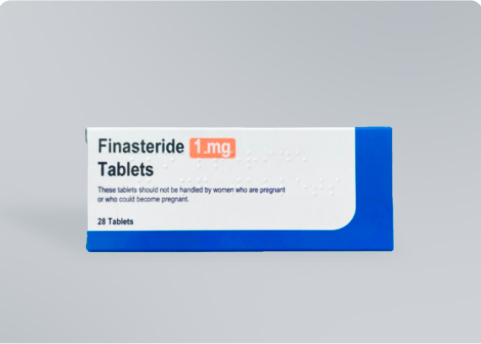Minoxidil is one of the only two FDA and MHRA-approved medications for male pattern baldness (alongside finasteride). It has been reported to improve hair density in 74% of men with androgenetic alopecia [1]. But what about its safety profile? What are the minoxidil side effects in men?
The good news is that while male patients may experience some minoxidil side effects, they are normally mild and temporary. Multiple studies performed over the years have shown this medication to be very safe, especially when used topically [2][3][4][5]. This article will tell you all you need to know about this topic, including:
- The minoxidil side effects men might encounter
- How long these side effects can be expected to last
- Whether minoxidil can produce sexual side effects in men
- Ways to prevent and reduce minoxidil side effects in men
Table of Contents
- What is minoxidil and how does it work?
- What are the main minoxidil side effects for men?
- Does minoxidil cause sexual side effects in men?
- Does minoxidil cause hair loss in men?
- Which men should not use minoxidil?
- How long do minoxidil side effects last in men?
- Can minoxidil side effects become permanent?
- How can men prevent minoxidil side effects?
- What to do if you experience minoxidil side effects
- Order safe and effective minoxidil from DrHair
- Frequently asked questions
What is minoxidil and how does it work?
Minoxidil was originally designed as a medication that treats high blood pressure. However, researchers soon noticed that it could also improve hair density and curb alopecia. So, in 1988, it became the first FDA-approved hair growth treatment [6] (the MHRA soon followed suit). This medication has been found effective in treating several types of alopecia, such as androgenetic alopecia, alopecia areata, chronic telogen effluvium and severe traction alopecia [7].
Minoxidil works for hair loss by dilating the small blood vessels in the scalp, allowing increased blood flow to your hair follicles. This provides an increased supply of oxygen and nutrients, which the follicles need to produce strong, healthy hair.
In most cases, men choose topical minoxidil to treat their hair loss, as it is safe and easy to apply to thinning areas alone. However, some prefer low-dose oral minoxidil, which may be more effective [8] and more convenient to use (you only need to take 1 tablet per day), but carries a risk of systemic side effects.
What are the main minoxidil side effects for men?
Minoxidil is generally very safe for men. Numerous studies into the potential adverse reactions of minoxidil have been conducted over the years and have revealed very few side effects, most of them mild and short-lived. Moreover, research shows that only a small percentage of men who use this medication experience any minoxidil side effects whatsoever [9].
However, it is hard to tell whether you will encounter any until you have tried the medication. Here are some of the adverse reactions that might occur.
Topical minoxidil
The side effects of topical minoxidil in men are generally mild, as the quantity of medication that is absorbed through your scalp into the bloodstream is too low for systemic reactions. Here is what you might encounter:
- Skin irritation
- Headaches
- Scalp flaking or scaling (dandruff)
- Scalp itching discomfort
- Scalp dryness
- Light changes in hair colour
- Unwanted facial hair growth (more common in women, but some men can also experience it)
Oral minoxidil
The systemic effects of the low-dose oral minoxidil used for hair loss are very rare, but some of them can be serious [10][3][11]:
- Temporary excessive hair shedding
- Weight gain
- Headaches
- Lightheadedness
- Fluid retention
Very rarely:
- Swelling of the breast tissue (gynecomastia)
- Minoxidil-induced low blood pressure (hypotension)
- Rapid heart rate (tachycardia)
- Fluid buildup around the heart (pericardial effusion)
- Worsening of preexisting heart failure
Does minoxidil cause sexual side effects in men?
It is highly unlikely for minoxidil to cause sexual side effects in healthy men. Even though such occurrences have (very rarely) been reported through the FDA Adverse Effect Reporting System [12], they have not been observed in clinical trials.
While serious finasteride side effects may include erectile dysfunction, low sex drive from finasteride or ejaculation difficulties, that is because it lowers your dihydrotestosterone (DHT) levels. This male hormone binds to androgen receptors in your hair follicles, causing male pattern baldness. However, it also plays an important role in sexual function, so reducing your DHT levels may affect sexual performance.
However, minoxidil does not work by reducing your male hormone levels. Instead, it increases blood flow to your hair follicles [13]. So it shouldn’t impact your sexual performance in any meaningful way.
Does minoxidil cause hair loss in men?
Some minoxidil users have reported increased hair shedding a few weeks into their treatment [3][15][16]. This temporary minoxidil hair loss is not a cause for concern or a sign that your alopecia is worsening. It is a normal phenomenon that sometimes occurs as the medication activates hair follicles that used to be in the resting phase. As minoxidil pushes them through the hair growth cycle, the old hair shafts fall out so new ones can start growing in their place, creating the impression of excessive hair loss.
Also known as minoxidil dread shed, this is short-lived and resolves without any treatment within 3-6 weeks of onset [16]. However, if more than 3-4 months have passed and your hair is still falling out, it is a good idea to see a trichologist to rule out a different cause unrelated to your treatment.
Which men should not use minoxidil?
Minoxidil is normally a very safe and effective medication. However, especially when taken orally, it carries a small risk of systemic side effects, so it’s not recommended for men with certain health conditions [17][10]. These include:
- Heart rhythm disorders
- Very low blood pressure
- Severe kidney disease
- Severe liver disease
- Allergic reactions to this medication
People who fall under at least one of these categories should only use minoxidil if specifically approved by their physician.
Moreover, even men who aren’t experiencing the conditions above should get the recommendation of a trichologist, dermatologist or their GP before using minoxidil. That is because it has the potential to interact with other medications they may be taking.
How long do minoxidil side effects last in men?
Minoxidil side effects are normally temporary, most of them subsiding after the first few weeks of treatment [18]. However, if more than 3-4 months have passed since starting this medication, and the side effects that bother you haven’t improved, you should consider an alternative treatment.
Can minoxidil side effects become permanent?
No, fortunately, there are no reports in scientific literature of permanent minoxidil side effects. Even the more serious systemic adverse reactions caused by the oral formulation subside soon after you stop taking the treatment. So if you are concerned about a potential minoxidil equivalent to post-finasteride syndrome (where medication side effects may persist after treatment cessation), you can rest assured that no such condition has been identified so far.
How can men prevent minoxidil side effects?
The best way to prevent the systemic side effects of minoxidil is to opt for a topical formulation. There is a variety of products to choose from: solutions, foams, gels or sprays. While applying the medication to your scalp twice a day can be more time-consuming than taking a pill, it is also safer. That is because most of the minoxidil solution remains inside your scalp (where it is needed to nourish your hair follicles) Only a very small amount of it gets absorbed into your bloodstream, which is insufficient to produce a systemic impact.
Other good ways to stay safe and decrease your risk of adverse reactions include:
- Always follow the recommended dosage and keep a consistent minoxidil application schedule (if you don’t have a doctor’s recommendation, follow the instructions on the leaflet or book an online consultation with our helpful DrHair support team for advice).
- Clean your hands thoroughly before and after applying minoxidil to your scalp.
- Never use a double dose of medication to make up for missing a previous one.
- Store your minoxidil properly, in a cool, dark place (e.g. avoid steamy bathrooms).
- Make sure your minoxidil is within its shelf life (see the expiration date on the packaging)
What to do if you experience minoxidil side effects
It is normal to experience some mild redness, itching or scalp irritation when you first start applying minoxidil to your scalp. However, if the symptoms are intense or persist past the first couple of months, you may be allergic to this medication. If this is the case, your trichologist can help you choose a more suitable hair loss treatment option.
Rarely, users may develop significant discomfort (such as severe irritation, swelling, inflammation, pain, itching and/or a rash on the scalp or face) shortly after applying minoxidil. This may be a sign of a significant allergic reaction. If this happens to you, clean your scalp thoroughly with warm water and gentle shampoo, and take some antihistamines. If the symptoms persist or worsen, contact your GP.
Order safe and effective minoxidil from DrHair
If you are looking for a safe and high-quality minoxidil formulation, DrHair has just what you need. Our 5% minoxidil spray is easy to apply and very affordable, and since it is topical, it carries almost zero risk of systemic side effects.
If you are looking for an even more effective option for curbing and reversing male pattern baldness, you can get our powerful topical minoxidil + finasteride combo at a great price (the oral finasteride + minoxidil combo is also available).
Signing up for our 3 or 6 month subscription will get you substantial discounts. And you’ll never have to worry about running out of hair loss treatment, as our fast and discreet delivery service will bring your order right to your doorstep in the shortest time.
Frequently asked questions
If you are interested in finding out more about the side effects of minoxidil in men, don’t forget to read the answers to these frequently asked questions.
If applying the topical formulation to your scalp causes a minoxidil-induced rash, you may either be allergic to the medication itself or to other ingredients in it. For example, some people who experience this symptom are actually allergic to propylene glycol, a component used to make the solution easier to absorb.
If you have experienced unexplained rashes from cosmetic products in the past, you may want to try your minoxidil on a small patch of skin before applying it to larger areas of your scalp. That is because many cosmetic products and treatments share the same potentially irritating solvents, propellants or preservatives, and there is a chance one of them is also used in your minoxidil formulation.
No, at this time, there is no evidence that minoxidil has any impact on your male hormone levels, including testosterone. While some in vitro research found that this medication increases the activity of certain enzymes involved in the synthesis of testosterone and dihydrotestosterone, these findings were not confirmed by animal or human studies [19]. So far, clinical trials have not reported changes in testosterone levels as a side effect of minoxidil use for hair loss.
At this time, there is insufficient evidence that minoxidil can affect a man’s sperm quality or fertility [19]. This is partly because this side effect is reported so rarely that it has not warranted specific studies. So, while it is not impossible for minoxidil to affect men’s fertility, it is very unlikely.
Yes, while it isn’t common, topical minoxidil can cause scalp dryness and flaking in some patients, producing dandruff. This is especially true for minoxidil foam, which can build up on your scalp. Moreover, if you already have a dandruff problem, using topical minoxidil can make it worse.
However, the good news is that dandruff is treatable with good scalp moisturisation and, if needed, specific antifungal medication, such as ketoconazole or piroctone olamine.


